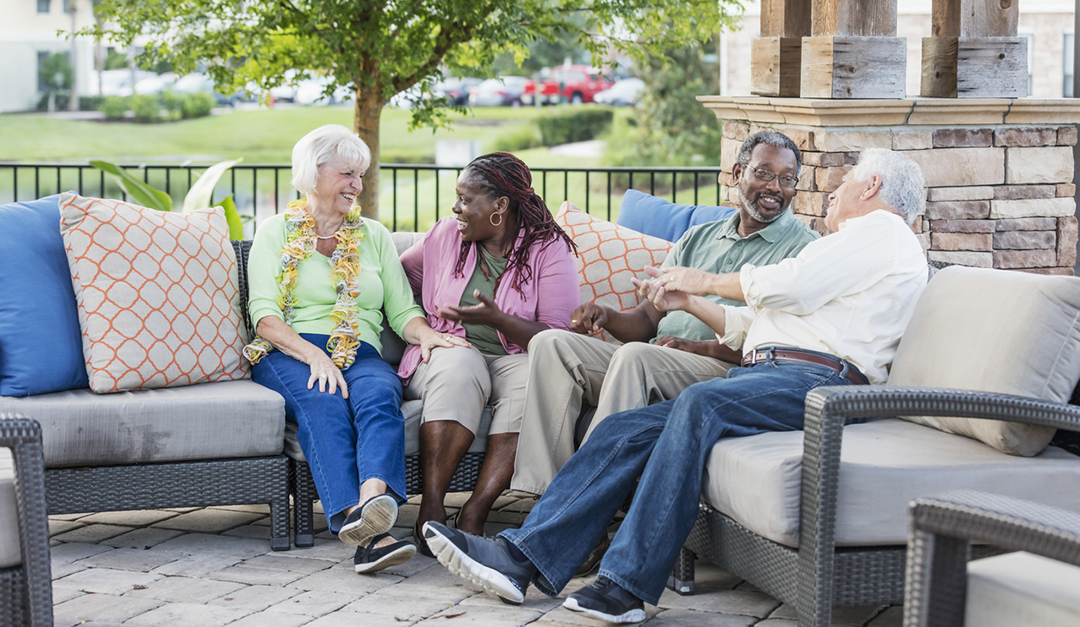(TNS)—The market for housing communities intended for those ages 55 and older recently got a big makeover, marked by a much wider selection of amenities, homes and target buyers than in the past. Developments featuring hiking and biking trails, big-name entertainment, athletic sports, community gardens and upscale and solar-powered homes are in. Golf courses and country clubs are no longer required features.
Top developer Del Webb continues to build massive projects with resort-like features, adding in more modern perks like a BMX pump track. Smaller developments target niche populations, such as equestrians, small plane hobbyists or retirees from specific professions. Private beaches, pickleball, film festivals, RV clubs and serious cooking classes are popular. Safety—most developments are gated—continues to be a key sales driver.
Rules defining these “active adult communities” are changing too. In addition to traditional 55-plus developments that prohibit younger buyers, the market now includes more developments that cater to older residents but don’t dictate ages of residents or visitors.
Meanwhile, the nation’s baby boomers have aged into willing and able target buyers. The generation holds about $8 trillion in home equity—an almost two-thirds cut of the entire nation’s—and it has made 55-plus developments one of the hottest markets going for U.S. home builders. Today’s developments are attracting buyers that never would have gone for traditional golf and tennis communities.
To get a sense of what’s on offer in active adult communities, check out the searchable resources at 55places.com, a brokerage firm that offers research, photos and reviews of thousands of these developments. (They don’t take money directly from builders of these developments but do hope to hook you up with an agent selling property in one. No endorsement implied here.) Numerous articles from real estate brokers and seniors organizations offer good basic advice on factors to consider when comparing 55-plus communities.
We’ve added below a few less-noted quirks of active adult communities that could have major implications for your happiness. While each of these points is a potential pitfall for buyers, they aren’t intended to deter sales in this evolving market. Rather, consider this information a basis for forming questions to ask in order to avoid unpleasant, post-relocation surprises.
Children may be closer than you think. “Active adult community” is a neutral term that can mean strict rules for age or none at all. While 55-plus restricted developments bar younger residents by law, “age targeted” developments can have any number of kids. It’s trendy for developers to broaden their potential buying pool, sometimes with a creative blend of both.
It’s important to ask where the lines are drawn now and in future development that may share facilities. Almost every community allows young visitors, but restrictions will vary widely. Can teenagers stay all summer and use the pools? Will the future club house for the family part of the development be isolated from the adults-only facilities or next door?
That pickleball court may never look so good again. Development companies typically maintain the pools, golf courses, bike paths and other amenities as long as there’s ongoing home-building. Once development is complete, they often hand over those responsibilities to another entity, such as an on-site country club, a professional management company or a homeowners association.
Going forward, who will manage the perks that attracted you? The quality of those amenities will depend on their skills, priorities and budgets.
Local politics affect your fun and finances. The homeowners association within a 55-plus community can be extremely powerful, oftentimes controlling the community’s budget and rules. In other words, it can determine how much you pay in fees, the length of the grass on your putting green and the size of your beloved garden ornament.
All of those factors—fees, rules and budget priorities—can change. Tennis courts may get pushed out in favor of pickleball, for example. The association probably can ban your cigar smoke at whim. Even age restrictions aren’t always set in stone. Find out how much control you have over these decisions, or in choosing the team that will make them.
You need an exit plan. While it’s hard to predict when health will fail, most of us will need continuing help eventually. And if you live in an active adult community, you may have to sell to get it. Those underage caretakers may be reticent or even barred from moving into a restricted community to help.
What level of fitness is required for continuing residency? While the development’s marketing materials probably tout the convenience of nearby medical facilities, few are set up for people that cannot live independently.
©2019 Rate.com News
Distributed by Tribune Content Agency, LLC











